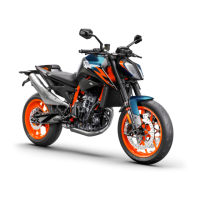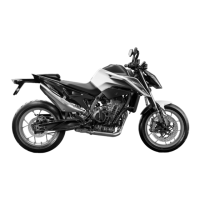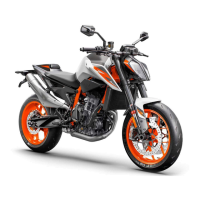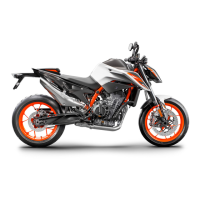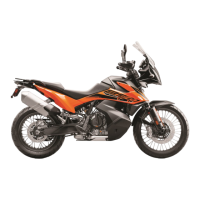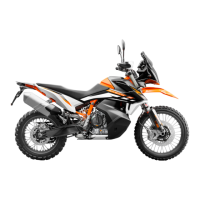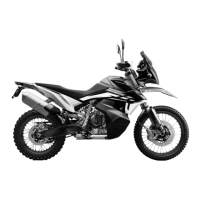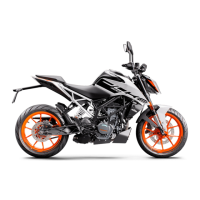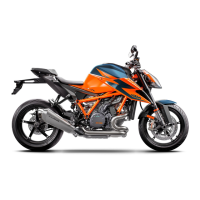CLEANING, CARE 20
113
20.1 Cleaning the motorcycle
Note
Material damage Components become damaged or destroyed if a pressure cleaner is used incorrectly.
The high pressure forces water into the electrical components, connectors, throttle cables, and bearings, etc.
Pressure which is too high causes malfunctions and destroys components.
– Do not direct the water jet directly on to electrical components, connectors, throttle cables or bearings.
– Maintain a minimum distance between the nozzle of the pressure cleaner and the component.
Minimum clearance 60 cm (23.6 in)
Note
Environmental hazard Hazardous substances cause environmental damage.
– Dispose of oils, grease, filters, fuel, cleaning agents, brake fluid, etc., correctly and in compliance with
the applicable regulations.
Info
To maintain the value and appearance of the motorcycle over a long period, clean it regularly.
Avoid direct sunshine when cleaning the motorcycle.
401061-01
– Close off exhaust system to keep water from entering.
– Remove loose dirt first with a soft jet of water.
– Spray the heavily soiled parts with a normal commercial motor-
cycle cleaner and clean using a brush.
Motorcycle cleaner ( p. 132)
Info
Use warm water containing normal motorcycle cleaner
and a soft sponge. Never apply motorcycle cleaner to a
dry vehicle; always rinse the vehicle with water first.
If the vehicle was operated in road salt, clean it with
cold water. Warm water would enhance the corrosive
effects of salt.
– After rinsing the motorcycle with a gentle spray of water, allow
it to dry thoroughly.
– Remove the closure of the exhaust system.
Warning
Danger of accidents Moisture and dirt impair the
brake system.
– Brake carefully several times to dry out and remove
dirt from the brake linings and the brake discs.
– After cleaning, ride the vehicle a short distance until the
engine warms up.
Info
The heat produced causes water at inaccessible loca-
tions in the engine and on the brake system to evapo-
rate.
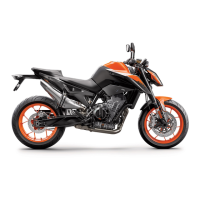
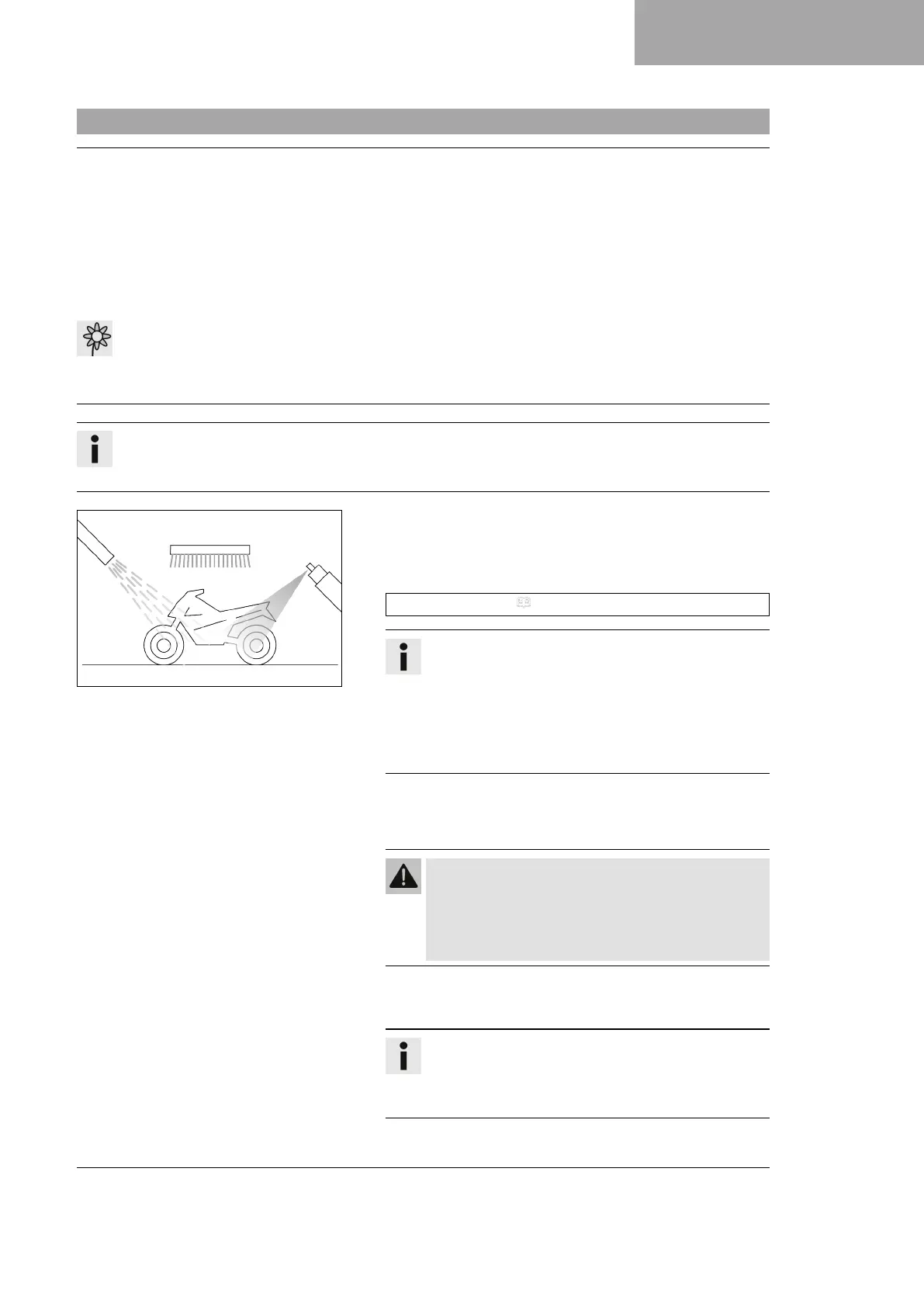